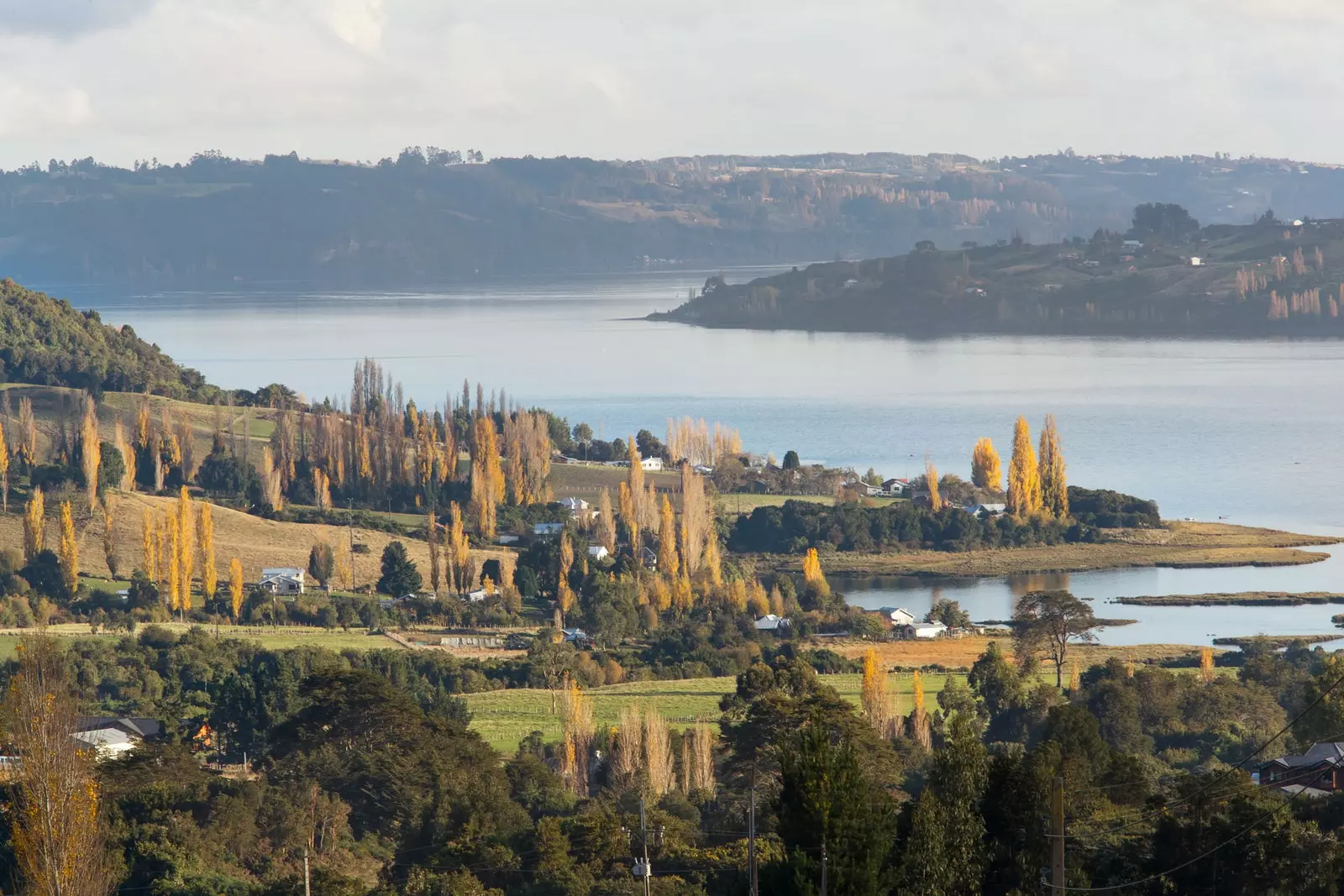
Estuary near Castro, the capital
The earth undulates, folds, twists, –like the sheets of a bed, at dawn– in an archipelago in the south of Chile.
"They were two monstrous snakes," says the Mapuche tradition. "It was a great telluric movement," says science. And the earth broke apart. What was once attached to the mainland disintegrated into dozens of pieces that formed islands riddled with hills. A new territory.
A new territory called 'Chillwe' by the Mapuche Huilliches and 'New Galicia' by the Spanish colonizers –invaded by homesickness–, in the middle of the 16th century.
A new territory that is, at present, a place desired by travelers in search of gastronomy, landscapes and unique architecture and a business space for salmon companies that plague Chiloé waters with fish that should never have known the Pacific Ocean.
A new (already old) territory called Chiloe.
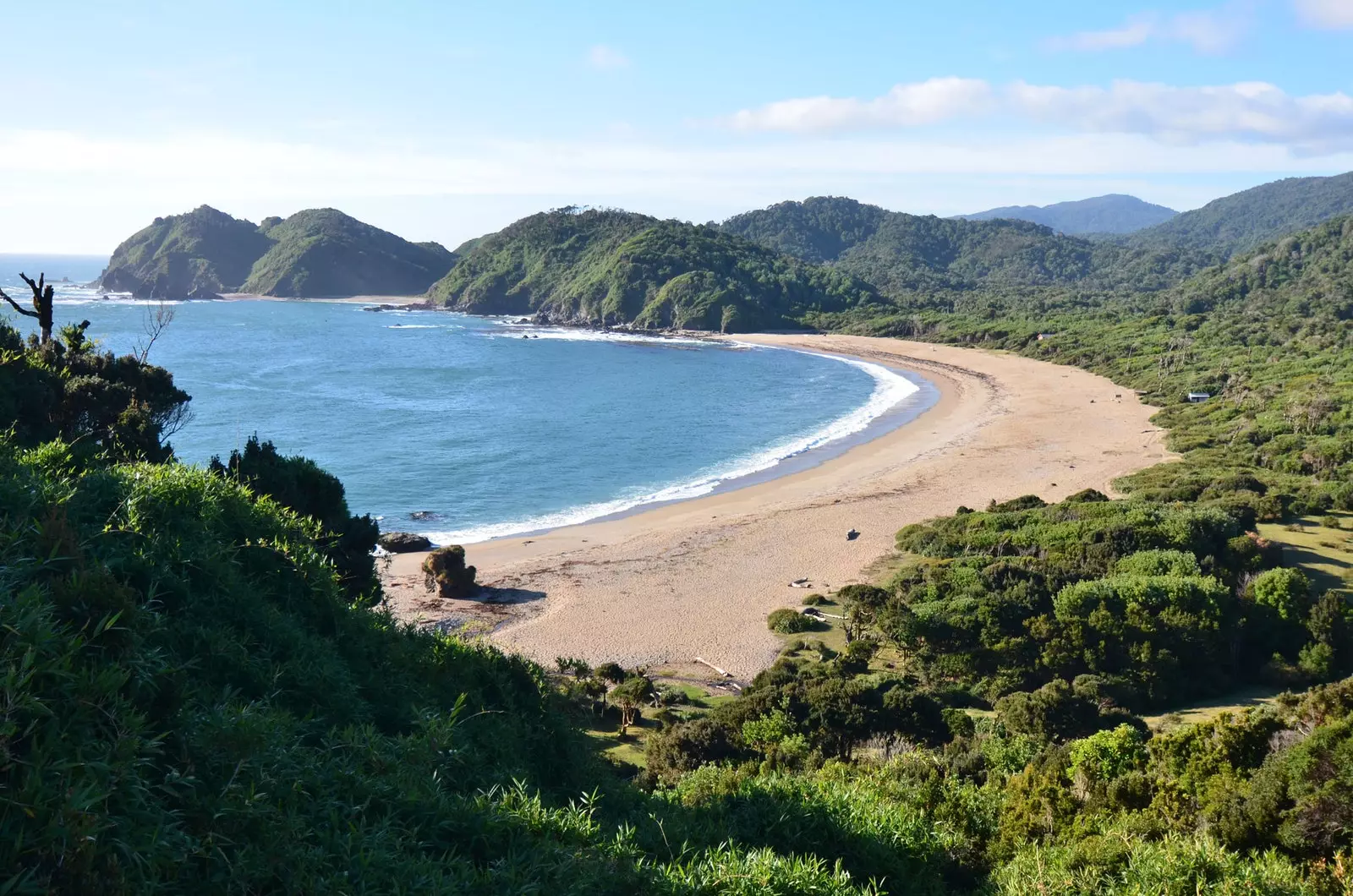
Chiloé, the 'Chilean Galicia'
CHILOÉ, THE MANY FACES OF CHILEAN GALICIA
Four kilometers. That's the distance that separates Big Island of Chiloe from the rest of the country. But in three kilometers the world can change drastically.
Mountains, valleys, lakes, rivers, fjords, glaciers and volcanoes. This is the rugged, scarred nature of southern Chile. The land of Chiloé, on the other hand, is very different: it has a bandoneon complex.
Lacking large mountains –the highest point of the archipelago reaches 980 meters–, the surface of Chiloé is made up of endless hills dyed green and upholstered in mist.
The hills, the green and the mist. That was what led to Martin Ruiz de Gamboa and the rest of the Spanish settlers to baptize that territory as 'Nueva Galicia' in 1567, due to its similarity to the northern territory of the Iberian Peninsula.
A piece of the Kingdom of Castile thousands of kilometers away. However, that term did not prosper. Chiloé, a derivation of the Huilliche “Chillwe”, was the name that prevailed for the archipelago, the only territory that retained the Crown of Castile in southern Chile after the defeat of Curalaba in 1598 against the Mapuche.
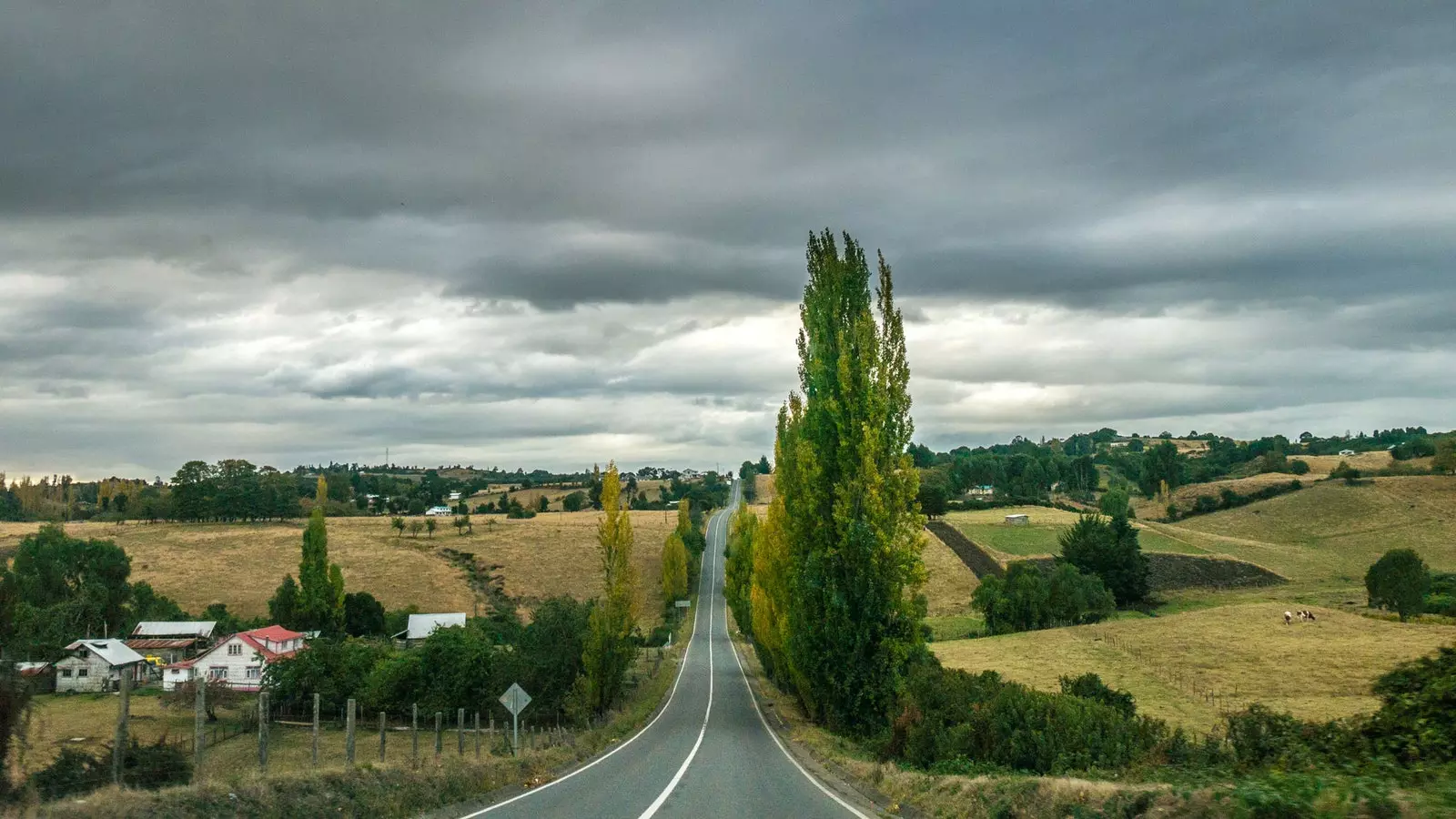
Driving through Chiloé is like going on a roller coaster
Driving through Chiloé is like going on a roller coaster. From the city of Ancud, on the north coast of the Big Island, to Castro, its capital, located in the center-west, the geography is felt in the stomach with each descent and ascent of the road.
Near the capital are located a large part of the islands that make up the archipelago and, in turn, the vast majority of populations of Chiloé. It is in them that part of the history of this territory can be read: names such as Curaco de Vélez, Dalcahue, Achao, Huillinco, Chonchi or Vilupulli give clues about the different human communities that have inhabited the region: Spaniards, Huilliches and Chonos.
The chonos were the first settlers of the Chiloé territory, canoe nomads who were displaced to the south of the island by the advance of the Huilliches.
Their trail was lost some time ago and one of the theories suggests that they were diluted as a group by mixing with other communities. Nevertheless, there is a rest of the chonos that still, today, remains as one of the symbols of identity of Chiloé: the curanto to the hole.
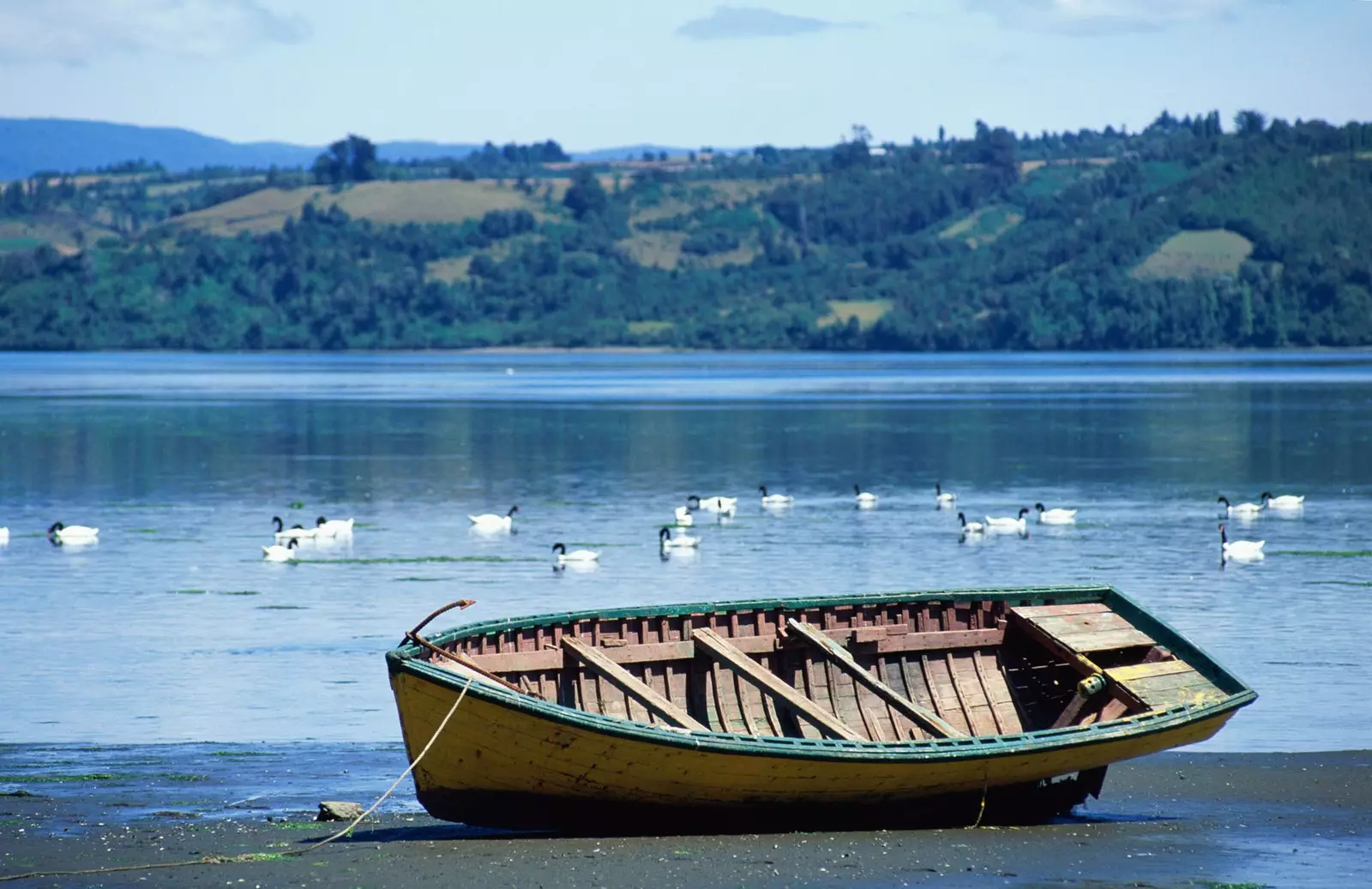
Curaco de Vélez, in the Los Lagos region
Curanto is a form of cooking that consists of the creation of an underground oven. The process – very similar to that of some Polynesian communities – consists of heating stones on fire, previously placed in a hole dug in the ground.
Once hot, the food is introduced (seafood, fish, potatoes...) and everything is sealed with pangue leaves –an autochthonous plant with a Jurassic appearance–, wet sacks and earth.
see, feel, taste a curanto It is one of the main attractions that attract hundreds of tourists to Chilote lands.
But the curanto is not the only emblem of the islands, there are also them: the Chiloé World Heritage churches. It was at the beginning of the first decade of 2000 when Unesco touched 16 churches in Chiloé with its magic wand.
belonging to the call 'Chilota school of architecture in wood', These churches were erected as the flag bearers of the more than 400 temples that exist in the archipelago, and have become a real challenge for the traveler eager to visit unique places. Like a child who collects trading cards. Or an adult who chases Pokémon.
Different patterns can be distinguished in Chiloé churches: some bright and colourful, others more sober and monochrome, but all formed by a wooden skeleton that struggles to continue resisting the (abundant) rain that falls on the archipelago.
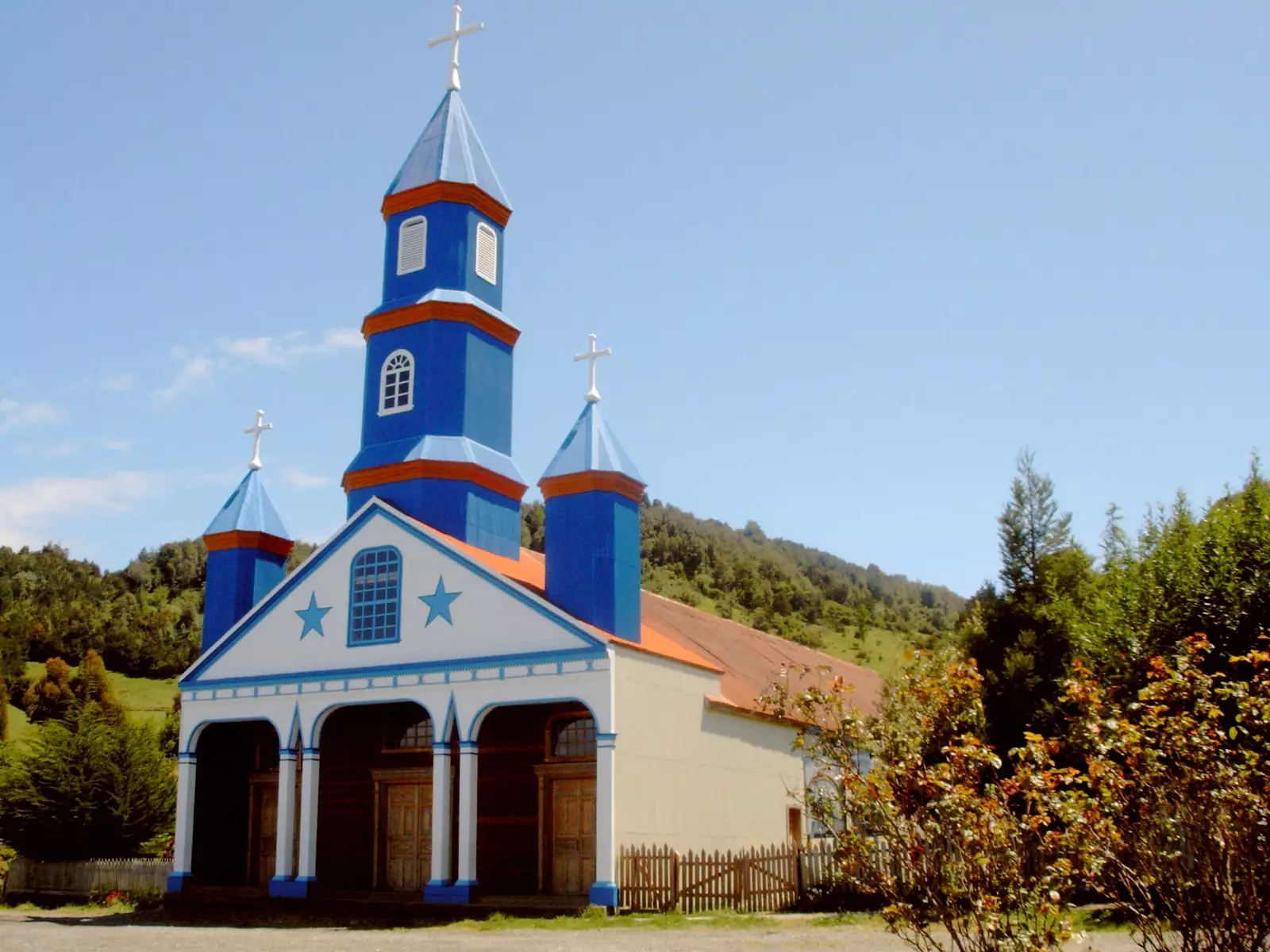
The churches, one of the emblems of the island and a UNESCO World Heritage Site
Chiloé and wood are two terms closely linked and this can be seen on the facades of its buildings –some of which are especially valuable, such as those on Calle Centenario, in Chonchi– through another of the island's emblems: the chilote tile.
This tile, which, due to its scale shape, gives houses a reptilian appearance, comes from different types of wood, among which the larch, a currently protected species due to its excessive felling.
Another inseparable element of the archipelago also comes from wood: the boats of Chilote artisanal fishermen. Since the chonos, the sea has been a means of life and subsistence for the inhabitants of the islands, which has been in serious danger in recent times due to a foreign visitor: the salmon.
They began to arrive in the 70s of the 20th century: companies dedicated to aquaculture that saw in the waters of southern Chile the ideal space for intensive farming –antibiotic barley– from salmon.
Forty years later, the South American country is among the main producers of this species. The problem is that Salmon is an exotic animal in the Chilean seas, apart from being a voracious predator.
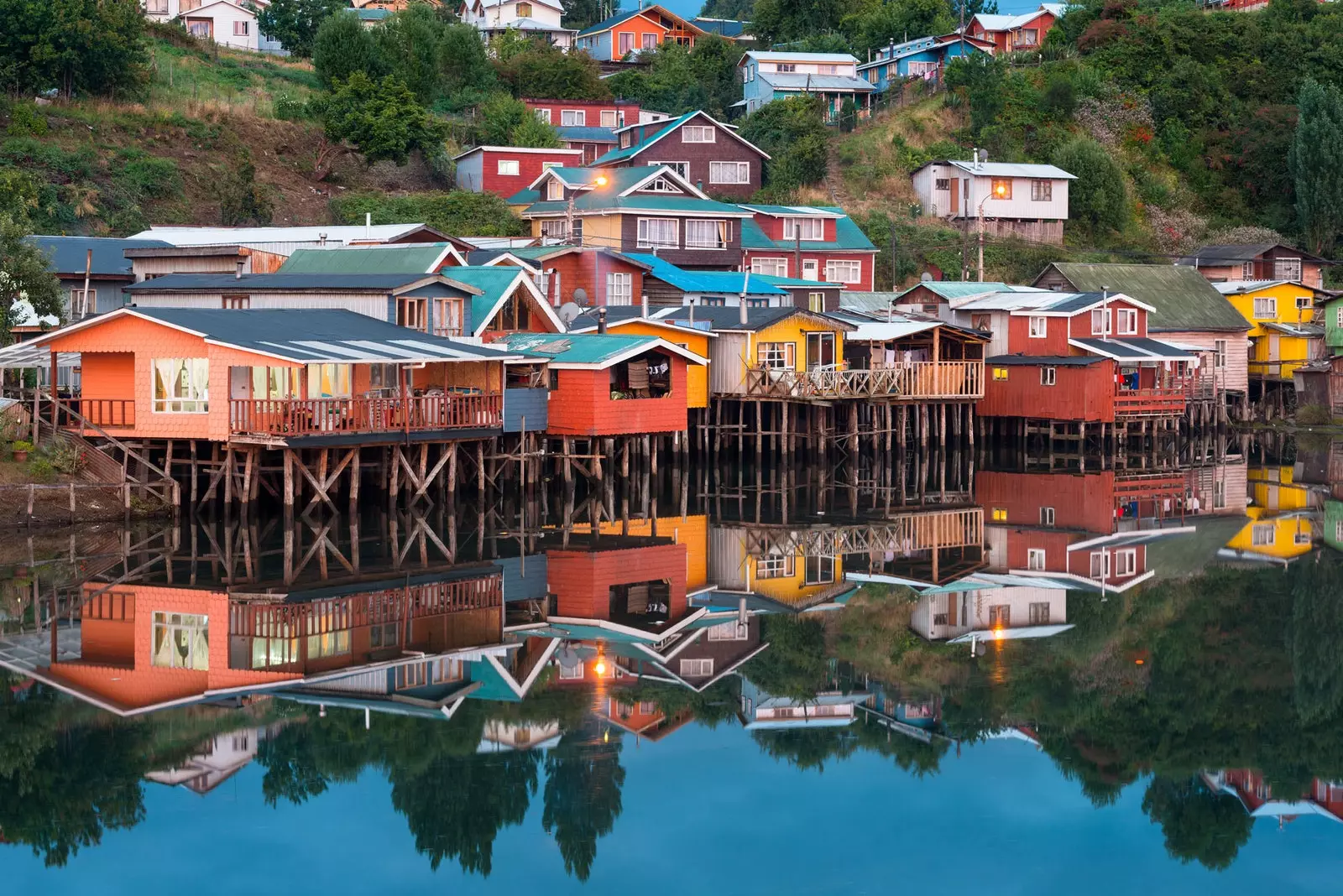
Castro, the capital of Chiloé
The relationship between artisanal fishermen and salmon farms was always tense due to the impact that the presence of an invasive fish laden with antibiotics and predator of the local fauna had on Chiloé waters (there have already been several cases of salmon escapes, such as the almost 700,000 that escaped in 2018).
But the moment of greatest tension occurred in 2016, when several factors came together –cause and effect for some, chance for others– and the "chilotazo" broke out.
It started in March 2016 and known as red tide –an invasion of microalgae that occurs in different parts of the world and contaminates fish and shellfish–, began to spread through the waters of the Chilote sea.
At the end of April numerous beaches woke up full of dead fish. This fact also affected the fish farms, which registered 40,000 tons of dead salmon. It was in the midst of this situation that six salmon farms a discharge into the sea of 9,000 tons of fish in a state of putrefaction.
During the following weeks, fish, birds and some sea lions appeared dead on the coast of the Chilean sea, turning that red tide into the most severe of all those that had affected the area.
The salmon farms blamed the 'El Niño' phenomenon; fishermen to salmon farms and their massive exploitation of water, accentuated by the dumping of salmon. The government declared the situation a catastrophe zone and the Chilote people took to the streets to protest, cutting off trade routes for almost two weeks in a social movement known as “el chilotazo”.
This chilotazo, apart from its social importance, was a demonstration of another of the emblems of the archipelago: Chiloé bravery. Friendly but blunt, polite but rebellious, rude but good-natured.
The sea? The constant rain? The times of scarcity? The Mapuche and half Galician-Spanish origin?… All of them can be reasons to explain that bravery from Chiloe.
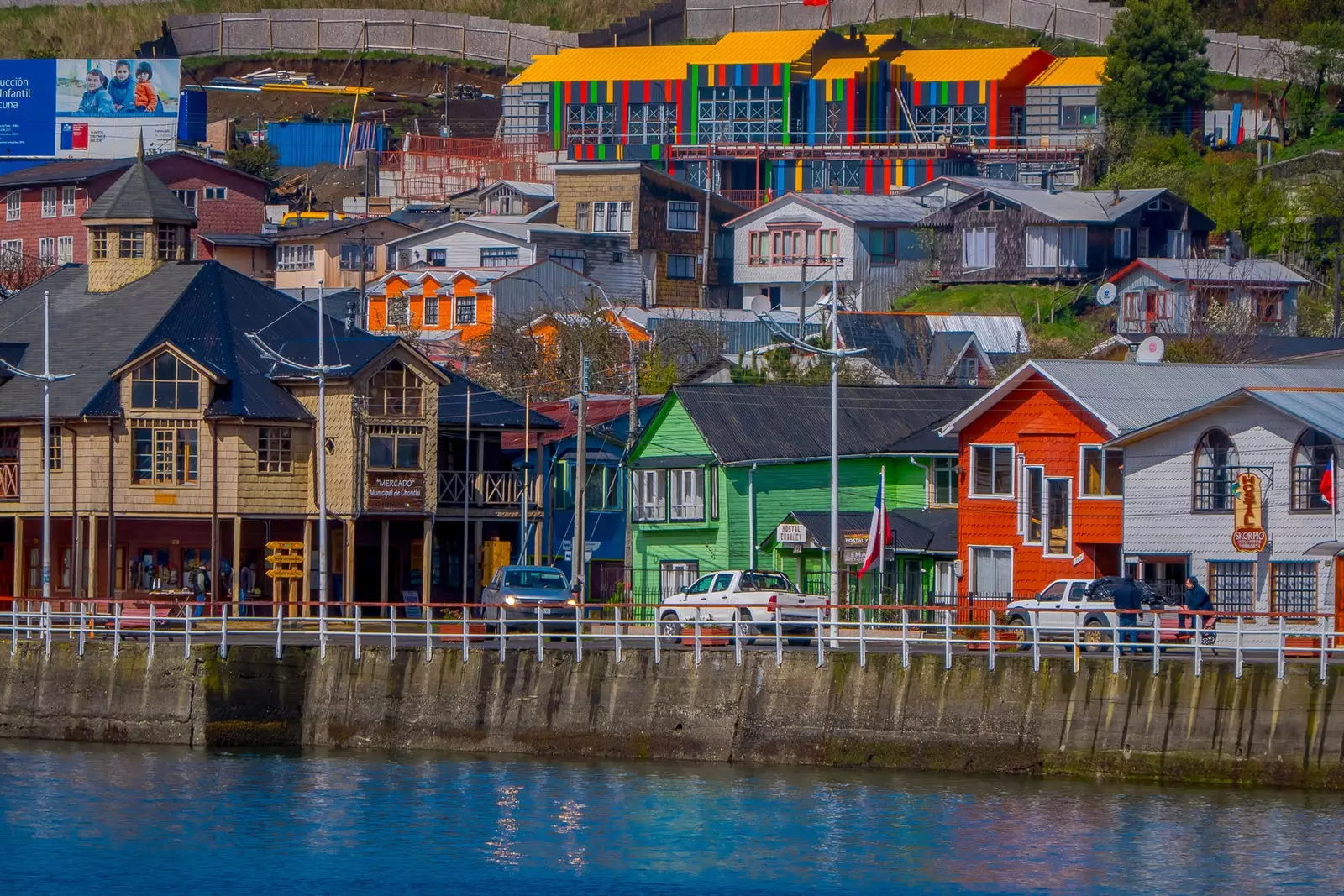
Port of Chonchi
THE EAST IS LIFE, THE WEST... THE OTHER LIFE
The Big Island of Chiloé can be divided into two: an eastern area, profusely populated, and a western area, more uninhabited and wild.
It is in the latter where they find the three natural parks of the archipelago: the Tantauco (the most difficult to access) , Chiloe National Park Y Tepuhueico park.
The Tepuhueico It has become, in recent times – through Instagram – one of the most desired places in all of Chiloé. The cause of everything is the Dock of the Soul, located near the town of Cucao.
The image is unmistakable: a serpentine pier that rises above the cliff towards the horizon. Above him, a person with a nostalgic / epic air who poses as if it were his last day on Earth.
In the picture it looks like the loneliest place on the island, however, behind the camera, a long line of tourists crowds waiting their turn –especially in high season–.
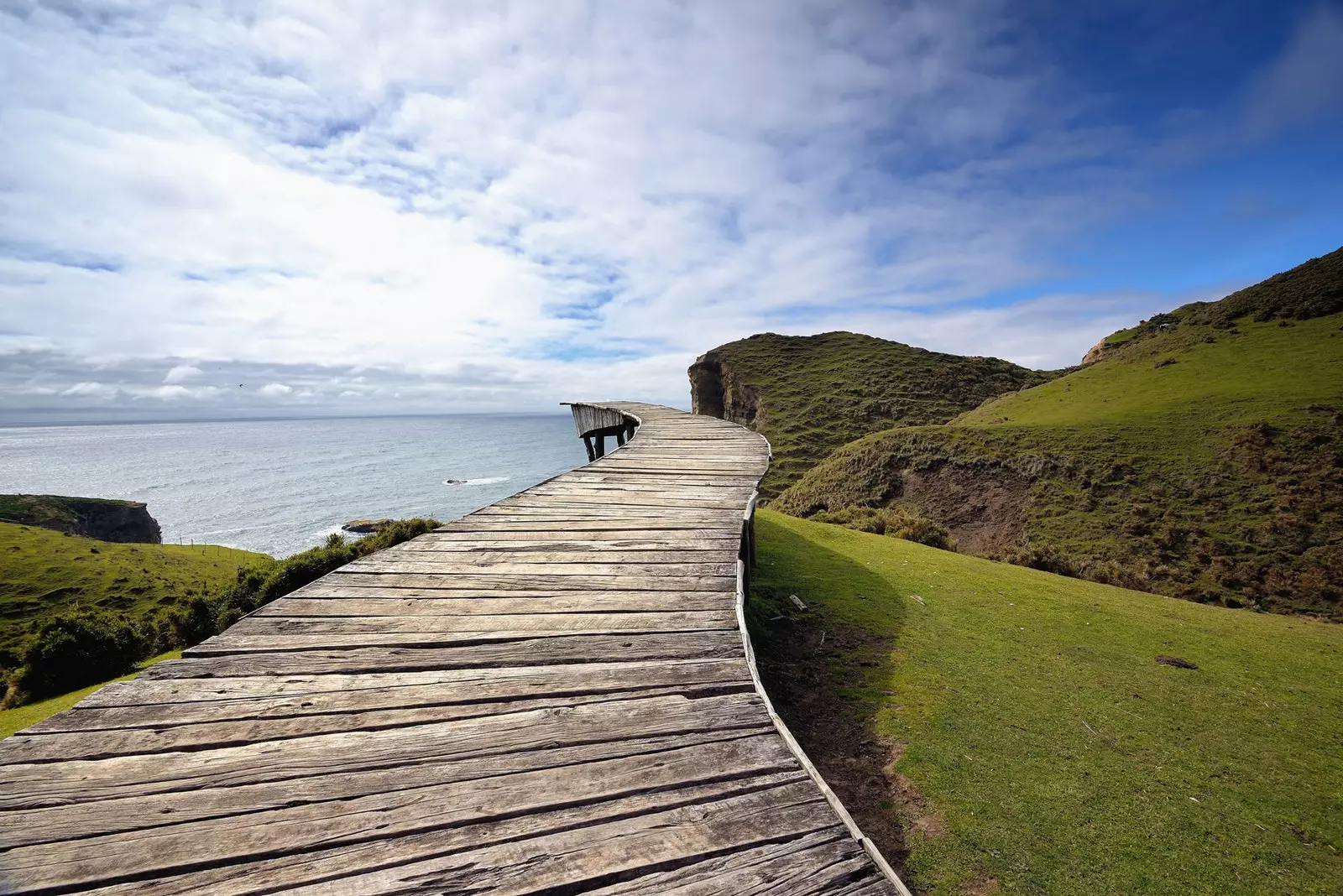
The Dock of the Soul, near Cucao
But the Dock of the Soul is actually a sculpture with deep symbolism, a tribute to the oral tradition of Chiloé. The huilliche voices tell that, when a person dies, his soul must travel to the cliffs of Punta Pirulil and call the ferryman Tempilkawe, so that he can be transferred in his white foam boat to the horizon, to the beyond.
At night, if you listen carefully, you can hear the laments of the souls between the breaking of the waves. Based on this legend, Chilean artist Marcelo Andrés Orellana Rivera built a platform in 2005 –half pier, half bridge– to the place where Tempilkawe took supplicant souls.
His goal was to create a space for reflection, where each person could connect intimately with the legend and its meaning. Today, this goal is something very far from what actually happens, with hundreds of people who come to the place hardly spending time on the explanatory poster that narrates the artist's intentions – much less stopping to reflect on the horizon, life, the boatman and the afterlife.
From the west coast, where the sun sets and the day – life – ends, to the east coast, where the vital energy of the archipelago throbs, Chiloé is unique in each of its folds and curves.
Whether in its landscapes covered in mist, or in the temperament of the Chilote sailors, this piece of Chile, fragmented after the titanic battle between the snakes Tentén Vilu and Caicai Vilu, is the closest thing to a fable that a traveler can find when touring South America.
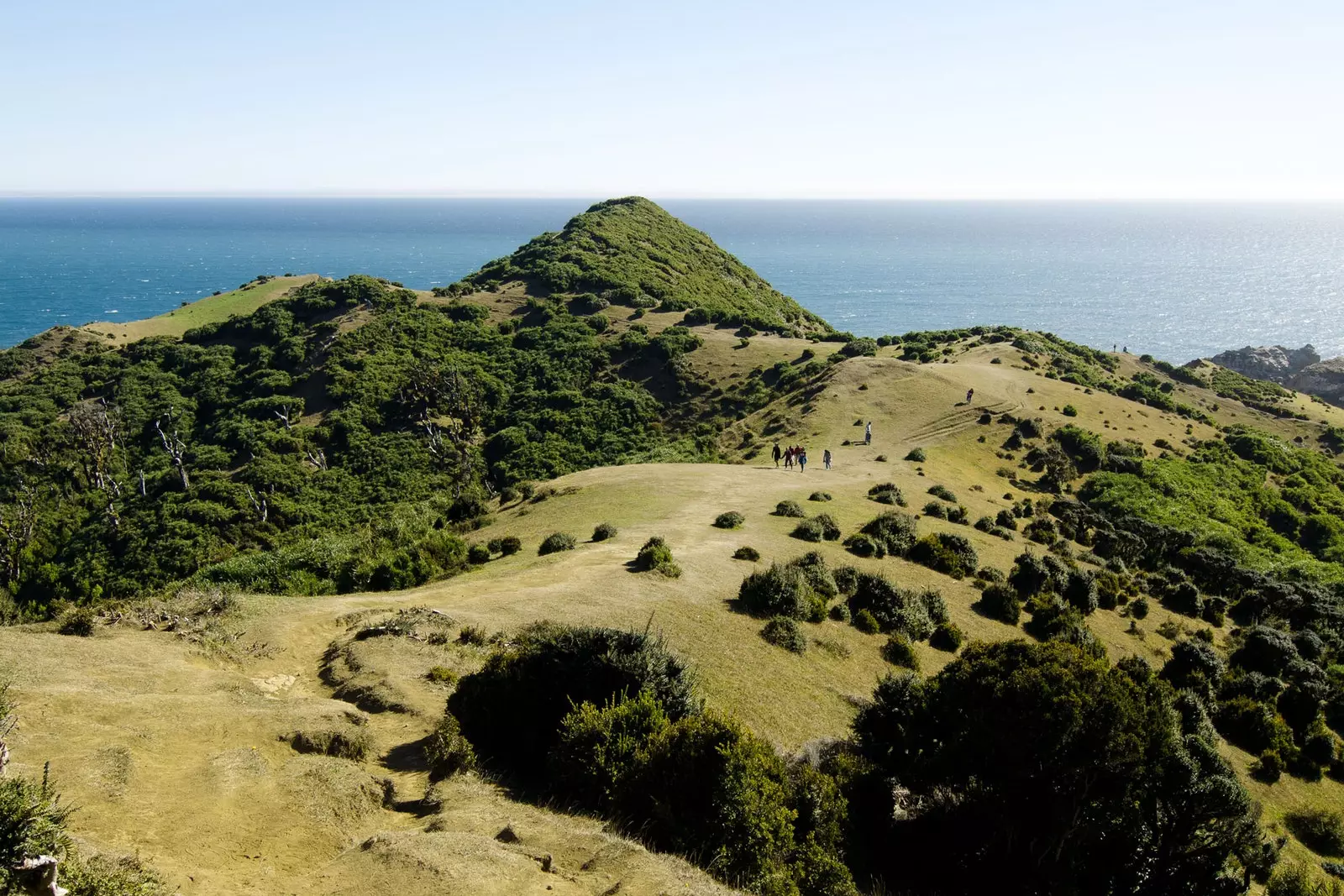
Chiloé: countless hills dyed green and covered in mist
